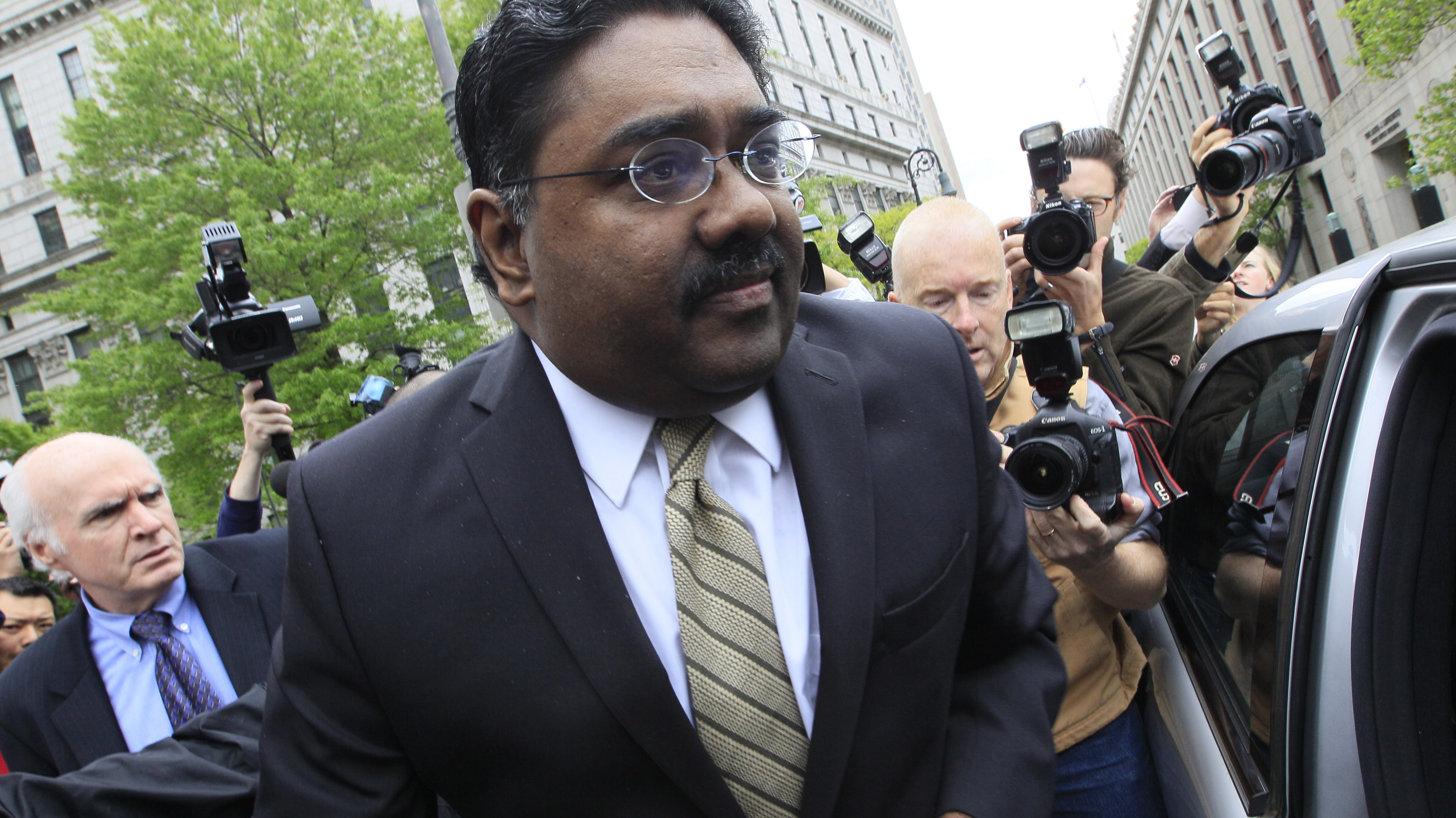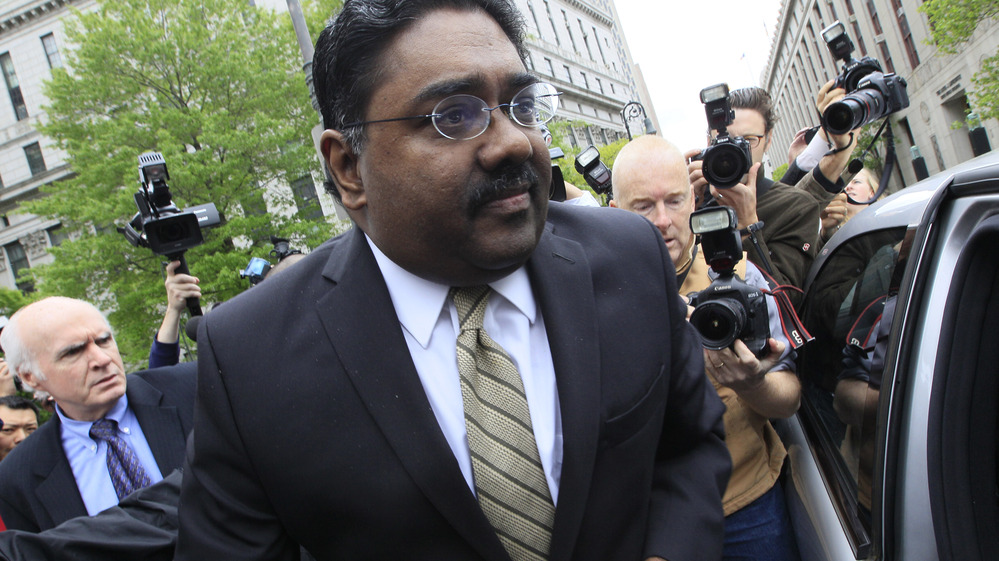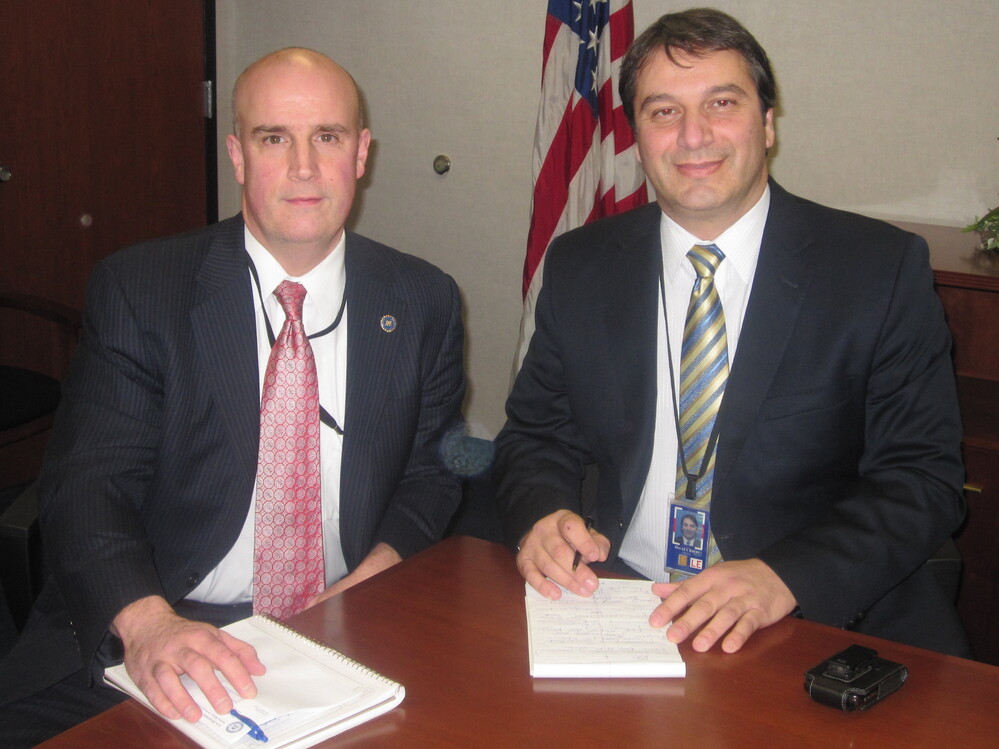Raj Rajaratnam, center, billionaire co-founder of Galleon Group, is surrounded by photographers as leaves Manhattan federal court May 11 after being convicted of insider trading charges.
Raj Rajaratnam, center, billionaire co-founder of Galleon Group, is surrounded by photographers as leaves Manhattan federal court May 11 after being convicted of insider trading charges.
Mary Altaffer/APIt was another busy year for federal authorities pursuing insider trading cases. Seventy-five people have now been charged in the last three years, and investigators say that success comes largely from their decision to attack insider trading the way they take down the Mafia and drug cartels â€" with tools such as wiretaps, informants and cooperators.
The story behind how the government decided to go after insider trading as hard as it goes after the mob is really just a story about dead ends.
"It was a product of sitting around the table and saying, 'OK, nothing else has worked. Where do we go now?'" said FBI Agent David Chaves, sitting in the FBI's New York field office in downtown Manhattan.
No Willing Cooperators
Chaves and his colleague Patrick Carroll head securities fraud and white collar crime units at the FBI. These guys have taken down Bernie Madoff, Martha Stewart and WorldCom chief Bernie Ebbers. But when they started getting whispers more than 10 years ago that there was an epidemic of insider trading at hedge funds, Carroll said, they were stumped.
"We had people who were telling us things, but we didn't have anybody who was in a conspiracy that was going to tell on what the others did," he said.
Patrick Carroll (left) and David Chaves head white collar crime and securities fraud units at the FBI's New York office. Their team pursued insider trading with some of the same tactics used on organized crime and drug cartels.
Patrick Carroll (left) and David Chaves head white collar crime and securities fraud units at the FBI's New York office. Their team pursued insider trading with some of the same tactics used on organized crime and drug cartels.
Ailsa Chang/NPRWhat they needed were real sources â€" people who did business with the insider traders. But, as Carroll says, how do you get high-flying financiers â€" with everything to lose â€" to flip and cooperate with you?
"Here's the product I'm selling: 'Tell on your friends, give me your money and go to jail.' How would you like to sell that product?" Carroll said. "It's very hard to develop sources in industries like the financial markets â€" primarily because when somebody does cooperate, they're done. They're not going to work in the financial markets again."
Carroll and Chaves said the hedge fund industry is a tight-knit circle. These were people who went to the same elite schools, who knew each other's families. Penetrating these networks as an undercover agent would have been really tough because there was an instant suspicion of outsiders.
By 2006, attention had begun to focus on a hedge fund manager named Raj Rajaratnam. Prosecutors would later accuse him of making more $72 million trading on non-public information. Carroll and Chaves said agents tried recruiting cooperators for the case by trailing people for months.
"We might be lifting weights with them in the gym. We will be behind them buying coffee until the given day when we feel that we have enough information and leverage to have them cooperate," said Chaves. "And there've been instances where the clerk would ask the subject, 'How would you like your coffee?' And we would answer on his behalf, 'Two sugars and cream. Please come with us.'"
The Decision To Wiretap
But the problem was, most of these people they confronted would just lawyer up and resist. What the feds needed was something to make people cooperate. And in early 2008, they decided, let's do a wiretap. Many of them, like Carroll, were longtime organized crime and narcotics investigators. They knew, in those worlds, when you needed leverage to make someone cooperate, you recorded them planning something criminal.
"Once we did that, now when we knock on your door, it's not like, 'Oh, the FBI's here. Big whoop. Lie to them or just ignore them, or hire a lawyer and they'll go away,'" Carroll said. "Now it's like, 'Oh boy, I have a problem.'"
Wiretaps weren't completely brand new to white collar cases. The FBI had already been using them in market manipulation and public corruption investigations.
But bringing the tactic into insider trading cases was unprecedented, and people close to the investigations say at least a dozen individuals have decided to cooperate after discovering the government had wiretap evidence against them.
Carroll said he and his squad were constantly aware of the tremendous intrusion into privacy wiretaps posed
"We use it when we have exhausted all other techniques and we believe it is the right thing to do to disrupt and dismantle an organization," he said.
Rajaratnam's lawyers would later argue that the wiretaps were never properly authorized.
Wiretaps As A Source Of Direct Evidence
The wiretaps weren't only useful for recruiting cooperators â€" they also provided powerful, direct evidence of insider trading.
For Andrew Michaelson, that was the perfect break. For almost two years starting in 2006, he had been leading a parallel investigation into Rajaratnam by the Securities and Exchange Commission. Michaelson analyzed trading records, reviewed all of Rajaratnam's instant messages for more than a year and even took his testimony.
But without wiretaps, Michaelson said, it's extremely difficult collecting evidence of insider trading against top hedge fund executives.
"Hedge funds, particularly long/short equity funds, are buying and selling stock all the time. So the fact that the hedge fund, say, bought a stock right after a phone call means less because they had also bought the stock just before the phone call," Michaelson said.
He added that hedge funds routinely receive analyst reports, and some reports might urge the fund to buy a certain stock, while other reports might tell the fund to sell that same stock. Therefore, after any trading activity, a hedge fund manager could almost always point to an analyst report as the reason for why the fund made a particular trade.
Wiretaps allowed investigators to listen in on the skyscrapers of midtown Manhattan for the first time and build insider trading cases with more than circumstantial evidence.
Rajaratnam was convicted in May after a trial featuring more than 2,400 taped phone conversations. Many of those recordings included Rajaratnam disclosing over the phone that he got an inside tip and was planning to trade on it.
Rajaratnam's lawyers have appealed his conviction on the ground that the wiretaps were illegal.
Rajat Gupta, a former Goldman Sachs board member and close friend to Rajaratnam, was convicted this year.
Now prosecutors are said to be closing in another hedge fund giant â€" billionaire Steven Cohen. And investigators say all these cases, and others, cropped up because a bunch of scared people heard their voices on wiretaps and started coughing up information.






